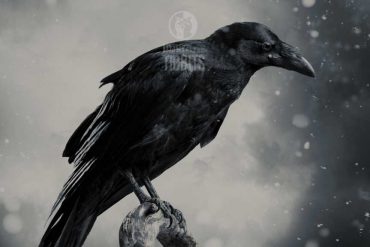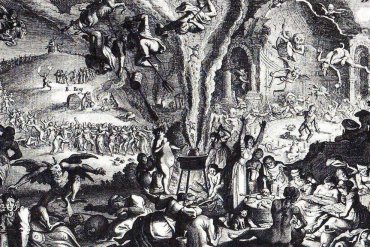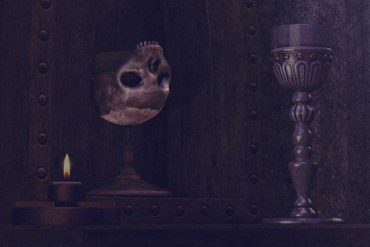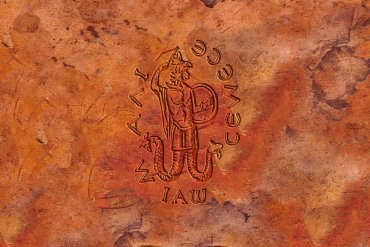Crows are brought up in the mythology of countless cultures around the world as they are frequently characterised as guides for traveling between worlds. European folklore explains that crows convene courts, pass judgments, and also execute guilty members. Connected with the Goddess’s death aspect, crows came to be perceived as evil or simply fearsome. Witches’ foot In medieval days, finding the foot of a crow, often referred to as a witches’ foot, was considered a...
Otto Maier’s secret texts. Is there more than meets the eye? Wali – Wili – Widi – Widar. In Eddic mythology Odin is avenged on the Fenris wolf by Widar. Wili is named alongside We as Odin‘s or Wotan’s brother. According to the third poem in the Poetic Edda, the vafthrudnismal (Vafþrúðnismál). Widar and Wali (who avenges Baldur and Hödur) rule over the sanctuary once Surtur’s flames have gone out. He is also called Ali...
Since the dawn of civilization, labyrinths have fascinated humankind. Knossos in Crete, has a distinctive circular maze design with seven rings. Exactly the same design appears mysteriously at different periods in history on stones and artifacts as far apart as India, Norway, Germany, Ireland, England, Arizona, … In English, the term labyrinth is generally synonymous with maze. As a result of the long history of unicursal representation of the mythological Labyrinth, however, many contemporary scholars and enthusiasts observe a distinction […]...
The sator a repo formula was well known throughout the ancient and medieval worlds, and in fact, known as the “Devil’s latin” or the “Devil’s Square”. It remained quite popular in Scandinavia into the 19th century as protection against theft and various illnesses. The magical effect of the formula lies in the fact that if properly spelt and laid out, it constitutes a 25 letter word-square, reading the same horizontally and vertically, left to right...
In almost all myths all over the world the same theme reoccurs. The twelve knights, twelve tribes, twelve heroes etc. In his last and longest dialogue (Laws), Plato teaches: There are twelve feasts to the twelve Gods who give their names to the twelve tribes. Also in early christianity, the image of twelve disciples with the Godman figure at their center echoes the twelve constellations which revolve in the heavens around the pole star. Are...
Bible quote from Book Exodus 22:18 “Don’t allow a female sorcerer to live.” Most legends and history intertwine and are inclusive of many items woven into a subject. As already said in previous post yesterday – https://www.maier-files.com/walpurgisnacht/ -, Walpurgis has many legends and stories very few which are true and have cost many innocent people their lives. If your garden or farm prospered better than your neighbors, if you had any form of physical deformity, you were old, ugly, particularly […]...
In the last days of paganism in Germany, the druids’ sacrifices were subject to punishment by death at the hands of the literalist Christians. Nevertheless, at the beginning of springtime the “druids” and the populace sought to regain the peaks of the mountains so that they could make their sacrifices or experience their celebrations at these remote locations, intimidating and chasing off the Christians (usually through the latter’s fear of the devil). The legend of...
It’s almost Walpurgisnacht, no better moment to have a closer look at our witches or Hexen. Where did this cruel hatred against women and the ancient pre-christian sanctuaries start? When Pope Innocent VIII (1484–92) professed his belief in witchcraft, he condemned it, and dispatched inquisitors to Germany to try its supposed practitioners and punish them unimpeded. Singling out Mainz, Cologne, Trier, Salzburg, and Bremen, the papal bull declared that “some parts of Northern Germany” were...
In every varieties of the Arthurian legend, the traditional reality of Arthur (who supposedly was the Warrior King of the Nordic Cimres as they definitely battled against the Anglo-Saxons between the 5th and sixth century C.E.), is less important in comparison to the aspect according to which we are led to see in his kingdom a sense of the fundamental regal function purely linked to the Hyperborean tradition, to the point that it obtained a value with symbolic together with […]...
In Sanskrit, skull cups are known as kapala, and they are generally formed from the oval section of the upper cranium. They served as libation vessels for large numbers of deities, which were mostly wrathful. However, they are also seen with gods such as Padmasambhava (India), who holds the skull cup, which is described as holding an ocean of nectar that floats in the longevity vase. This Elixir was at the heart of many secret...
Carl Jung had written extensively on Abraxas. In his 1916 book called The Seven Sermons to the Dead, Jung called Abraxas a God higher than the Christian God and Devil that combines all opposites into one Being. Abraxas was a polymorphous world spirit which permeates — or even encompass — the very fabric of existence. Abraxas is … a thousand-armed polyp, coiled knot of winged serpents … the hermaphrodite of the earliest beginning … the...
Heretic Middle English: from Old French heretique, via ecclesiastical Latin from Greek hairetikos ‘able to choose’ (in ecclesiastical Greek, ‘heretical’), from haireomai ‘choose’. In the Encyclopaedia Britannica one can read:“The word heresy is derived from the Greek hairesis which originally meant an act of choosing, and so came to signify a set of philosophical opinions or the school professing them. As so used the term was neutral, but once appropriated by Christianity it began to convey a note of disapproval. […]...













